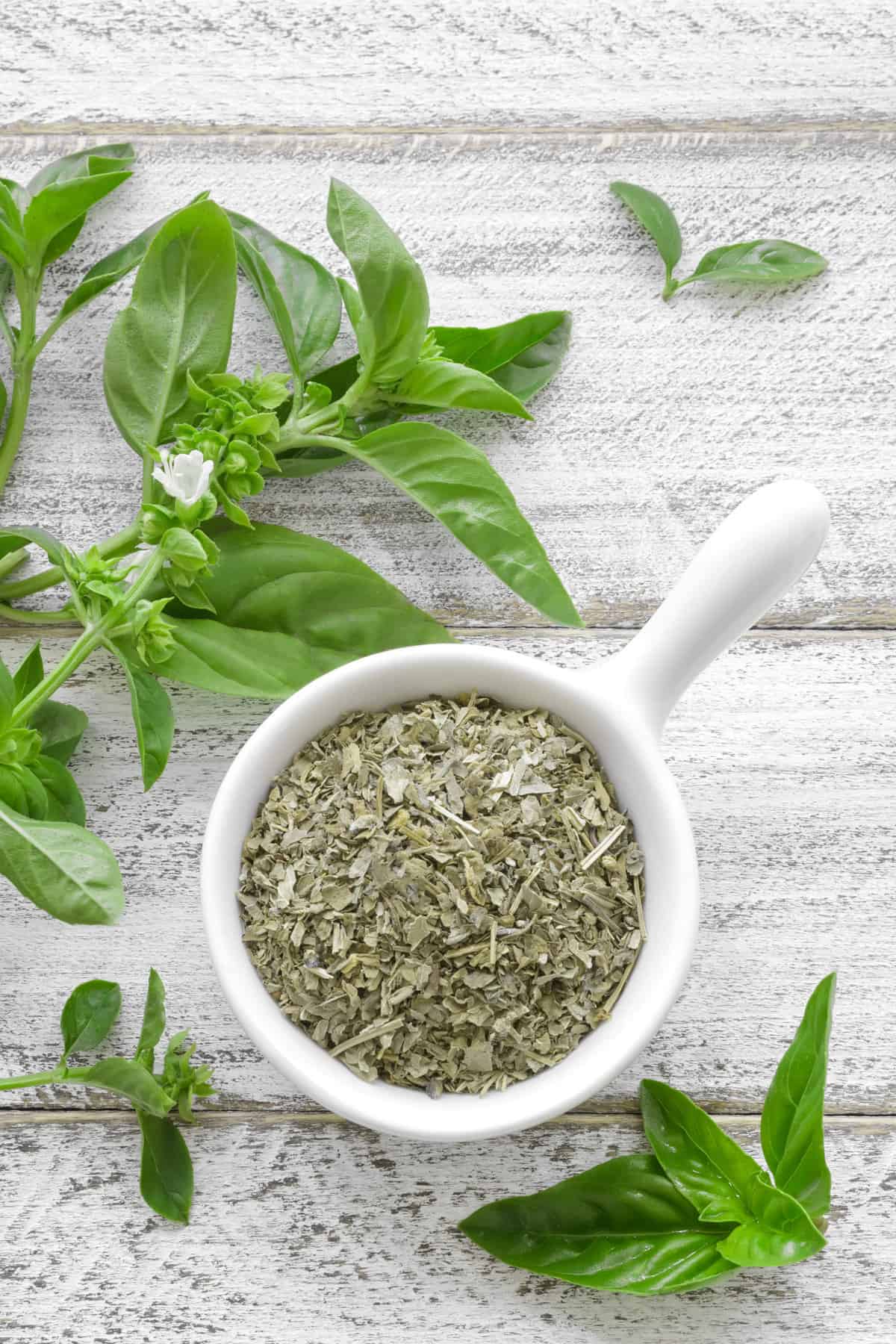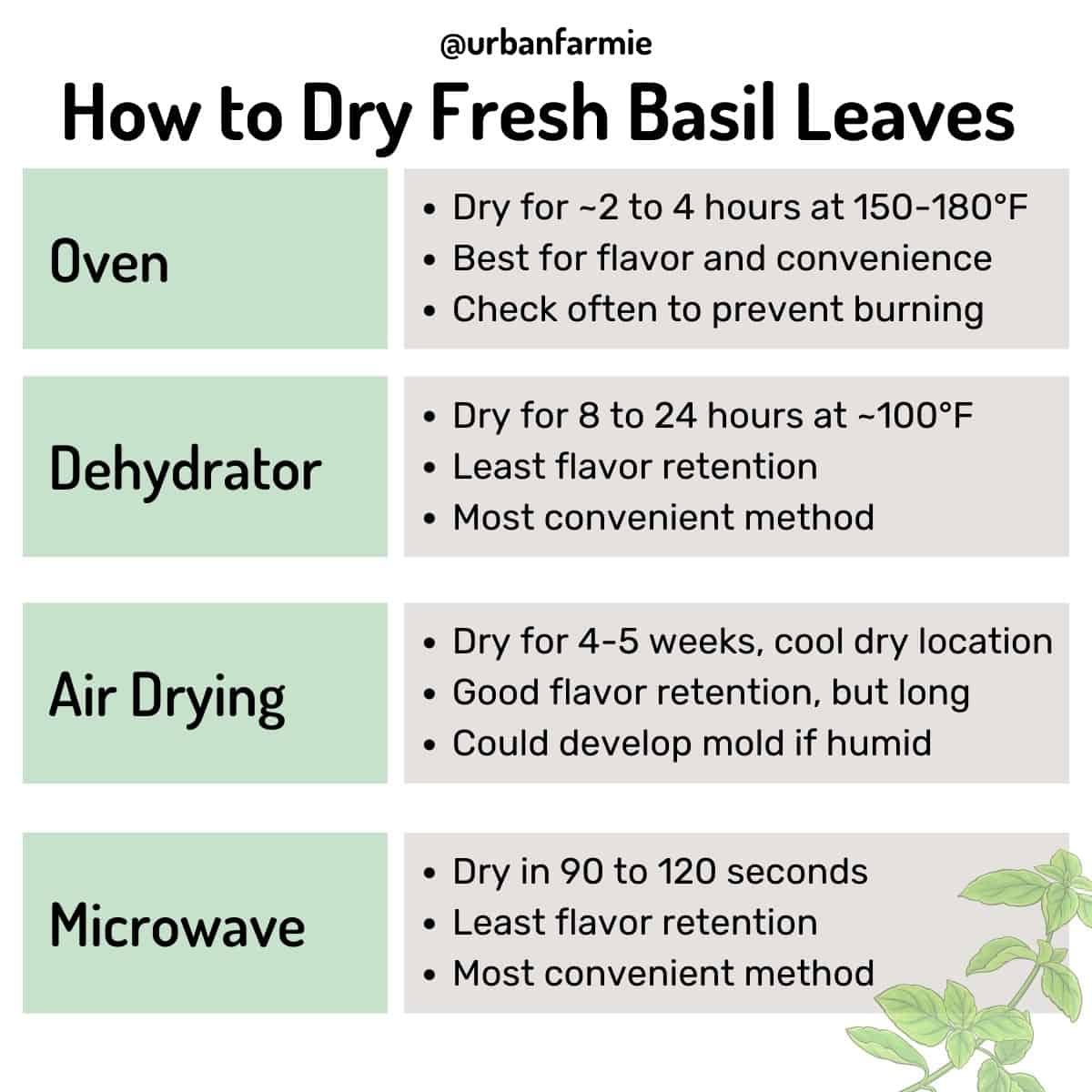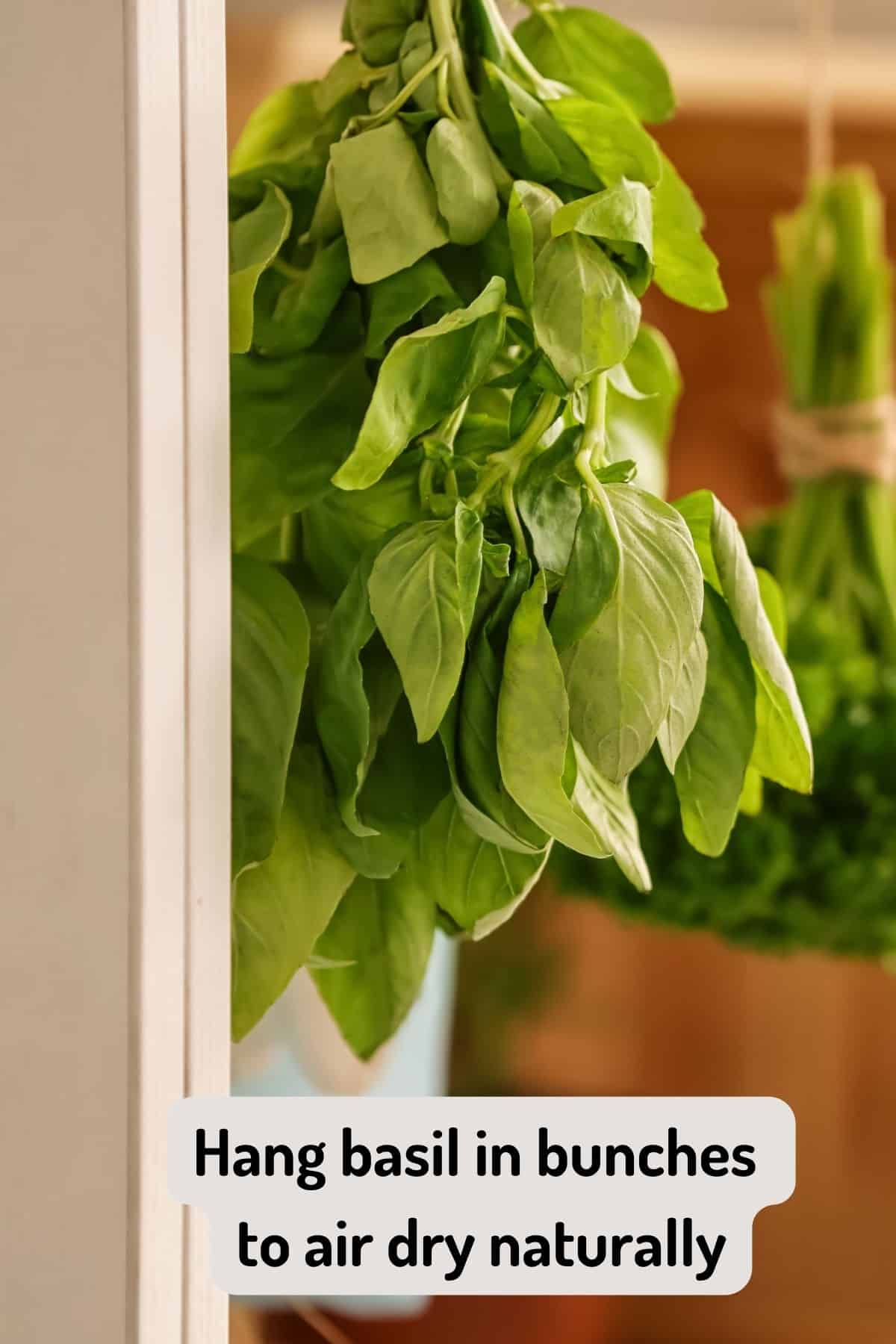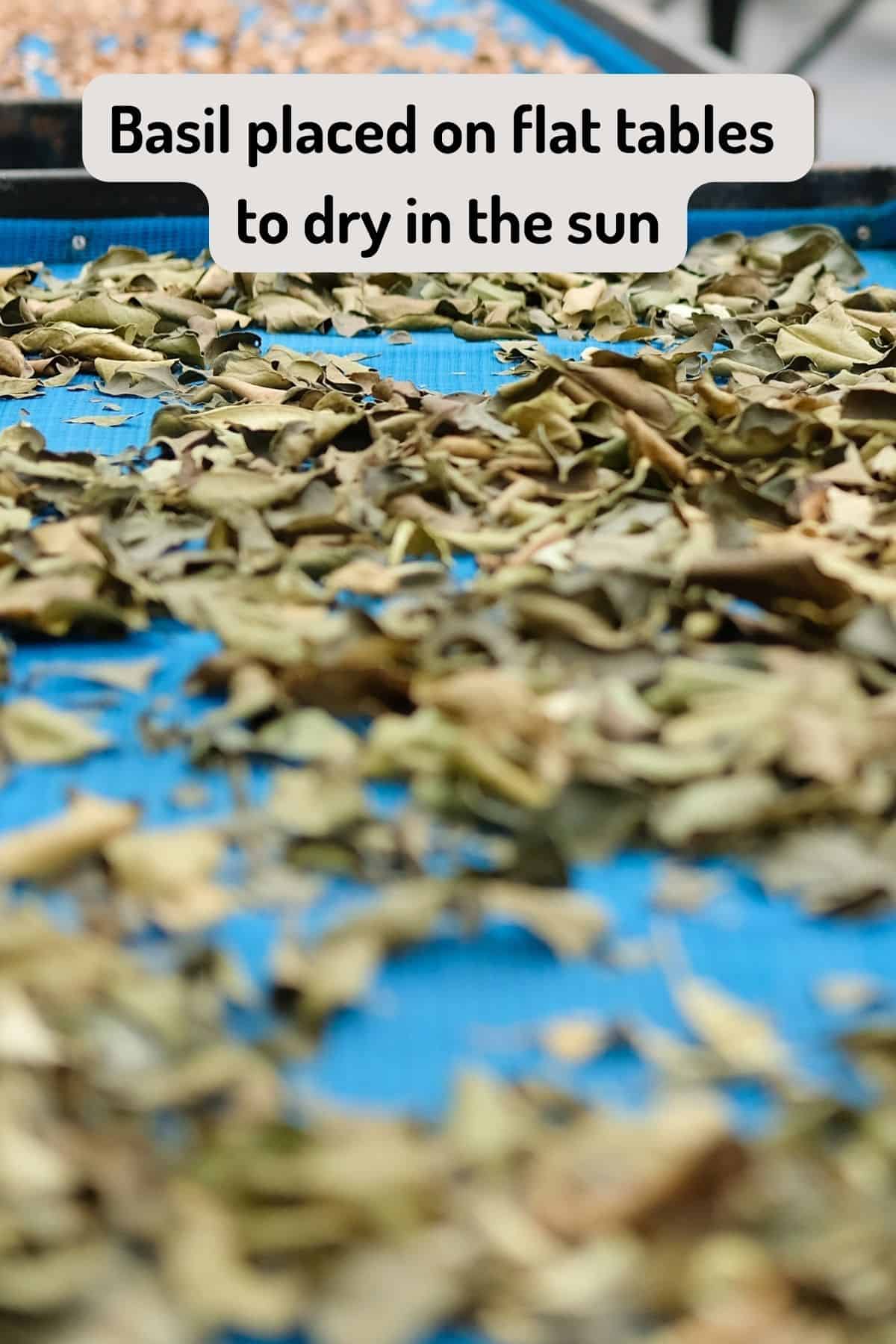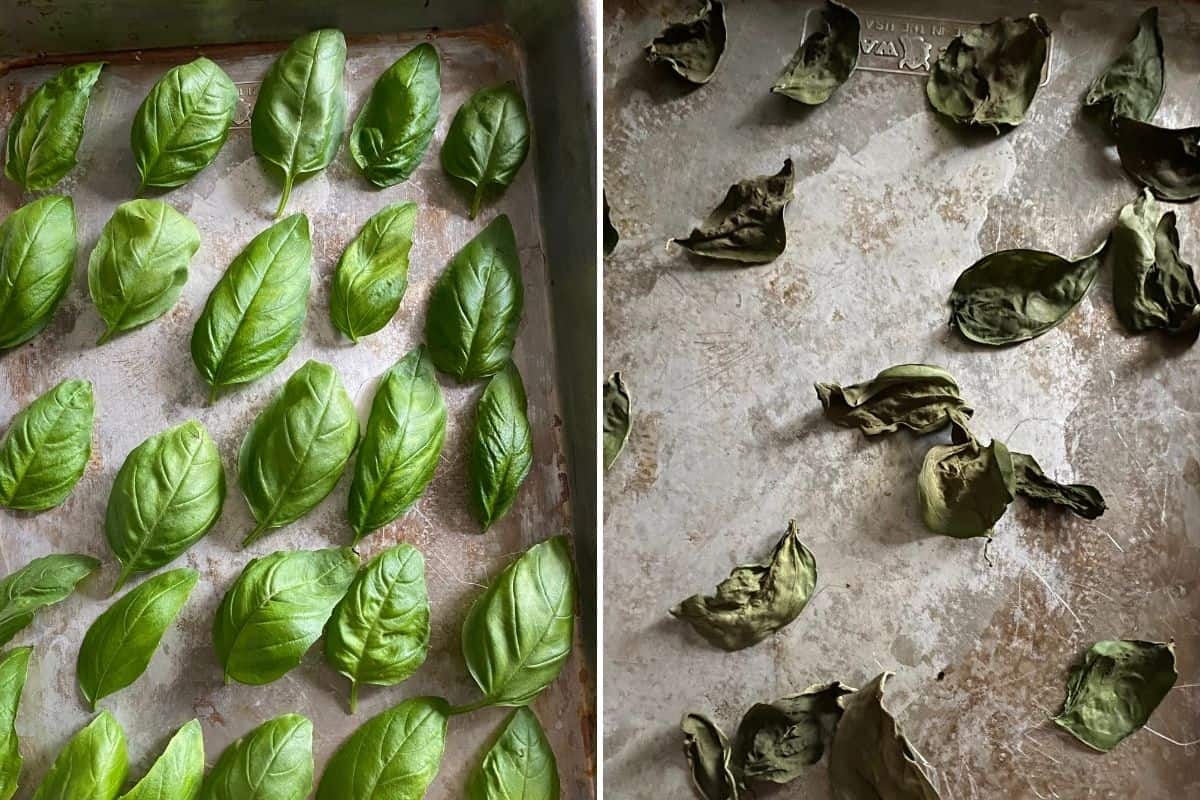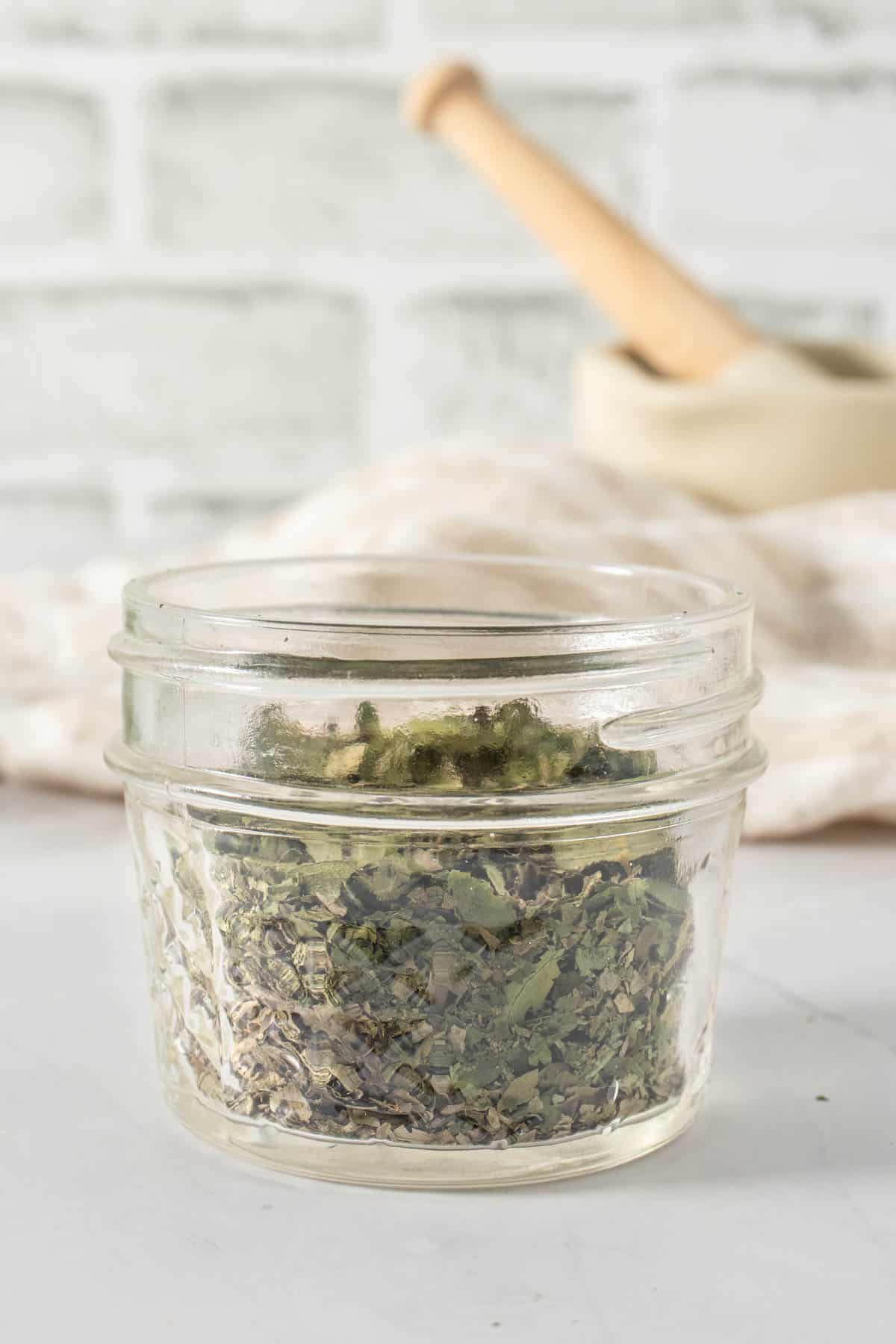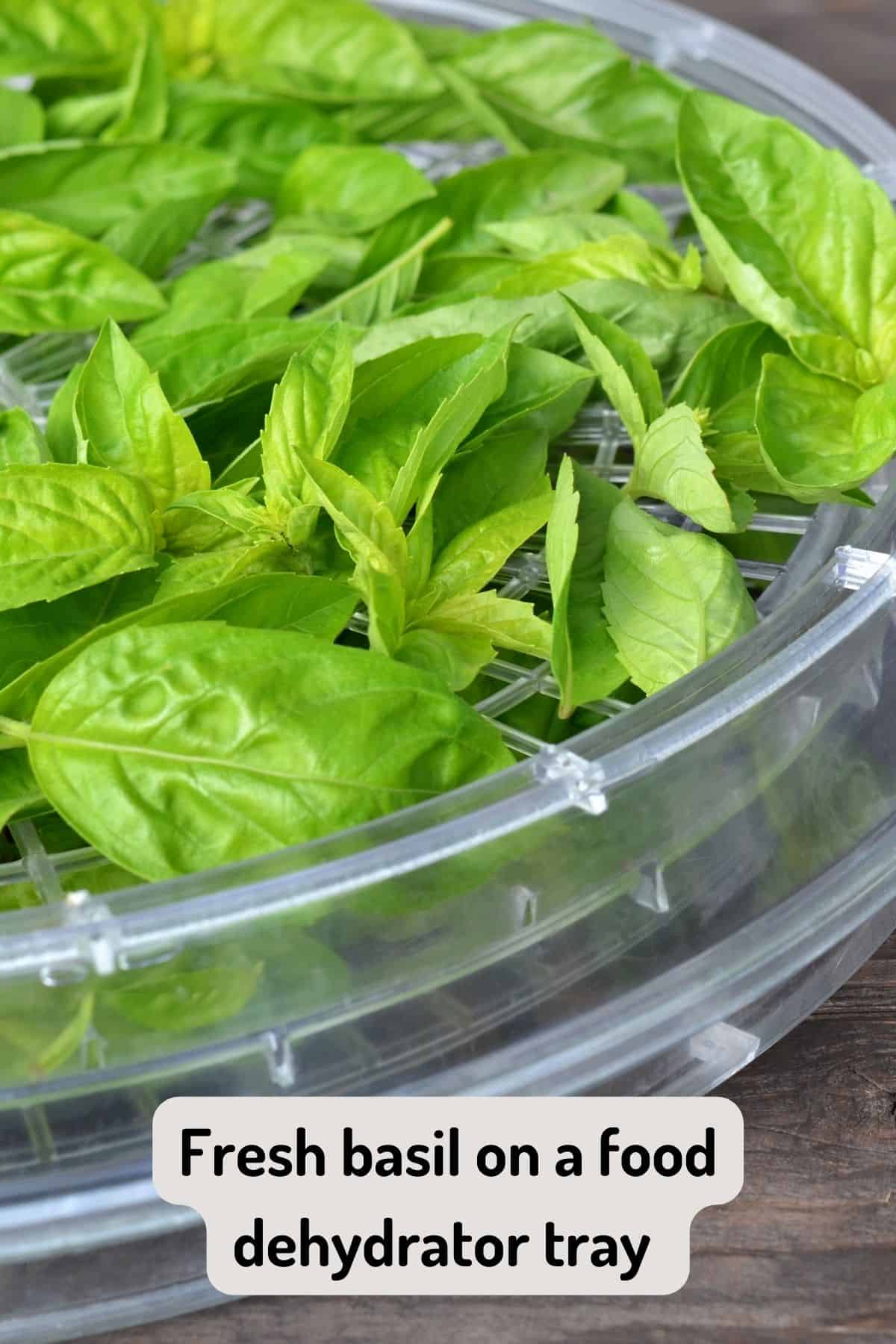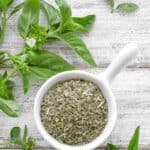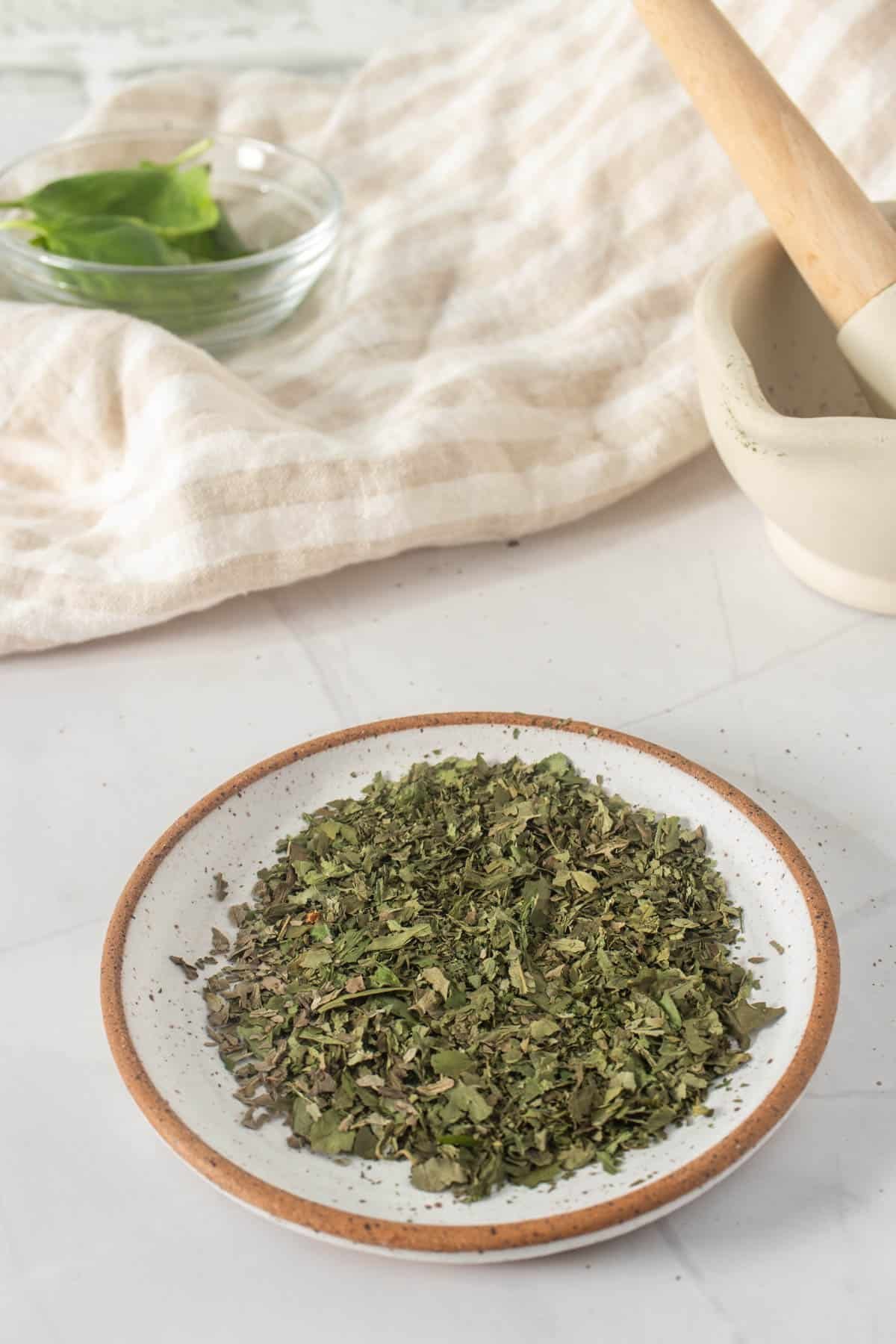💭 Why dry basil?
Drying basil prolongs the life of this summertime herb. If you’re wondering if dried basil is the same as fresh basil, it’s not. Dried basil is more concentrated and not exactly the same flavor as the fresh form. If you’re trying to preserve the flavor closest to the fresh form, drying basil is not the way to go. Instead, I recommend these three options:
Make and freeze pesto. Through the year, I love having basil pesto in the freezer - either as a traditional pesto alla Genovese, or more non traditional varieties, like broccoli pesto. Freeze fresh basil leaves. It’s super simple to freeze fresh basil leaves, and then you maintain them in the freshest form. Freeze basil as herb bombs. This requires a bit more thinking in terms of how you chop the basil, but it’s an amazing way to prevent food waste and store the basil in a way that’s more convenient to use!
That said, if you have a bumper crop, then drying will still be the most effective way to preserve all the basil for later use.
📋 Ingredients and notes
You’ll need fresh basil leaves and the equipment of choice. You can either use homegrown basil or you can get a large batch of basil from the grocery store.
Tips for picking basil
Pick the basil right before you’re about to dry them. This makes sure that the leaves stay fresh and don’t shrivel up on themselves.Harvest your basil leaves in the morning when the oils are most concentrated for the best flavor. Use scissors or pruning shears to cut the stems just above a leaf node.Remove the stems from the basil leaves - you can just pinch the leaf off.Remove any damaged or yellowing leaves and wash basil by giving it a gentle rinse in cool water to remove dirt and insects. You can also use a salad spinner to help dry the basil leaves. Make sure to remove excess water. Pat dry with paper towels or a clean cloth. Any moisture leftover will cook your basil, instead of drying it. It can also lead to mold formation if you’re air drying the basil.
👩🏽🍳 Which method to dry basil is the best?
While microwave drying is the fastest, it tends to zap the basil of more flavor than the other methods. And while drying using a dehydrator or air drying both maintain the best flavor, they take forever! We’ll explore how to dry basil using each method in this post. So, I’ve found that the best, happy medium is to oven dry or use the air fryer to dry basil. Best flavor retention in just a couple of hours. But here’s a quick infographic in case helpful (the oven section also applies to the air fryer).
How to dry basil naturally
If you prefer to take the DIY approach at home, you can dry basil naturally two ways: by hanging basil leaves to air dry or by drying basil in the sun. Both of these methods take at least 1-2 weeks, and you’ll have to watch for dust, debris and pests as the basil dries.
Air drying basil by hanging
To dry basil naturally at home, begin with fresh basil harvested from your own plant or a store-bought one.
Create small bundles of basil leaves, making sure they are clean and free from moisture. Tie the small bundles of basil with twine or string.Choose a suitable location with good air circulation, such as a dry, well-ventilated room with indirect sunlight.Air dry basil by hanging these bundles upside down from a hook or hanger.Over 1-2 weeks, allow the basil to dry naturally until leaves become crispy, effectively turning your fresh basil plant into homemade dried basil.This method ensures that you naturally dry out basil, preserving its vibrant flavor and aroma, making it perfect for enhancing your culinary creations.
Dry basil in the sunlight
Drying basil in direct sunlight is a simple and effective method.
Once you harvest fresh basil leaves from your basil plants, ensuring they are clean and free from moisture. Lay the leaves in a single layer on a clean, dry surface, preferably a tray or a screen, where they can receive direct sunlight. Make sure to place the tray in an area with consistent and strong sunlight exposure. Leave the basil leaves out to bask in the direct sunlight until they become completely dry and brittle, typically within a day or two. Once the basil leaves are dried, you can crumble them into flakes or store them whole alongside other herbs in an airtight container. This natural sun-drying method preserves the aromatic qualities of the basil while transforming it into a valuable addition to your dried herb collection.
How to dry basil in the oven
Preheat the oven to the lowest setting possible (in my oven it’s 175°F but try to keep it under 180°F) - if your lowest oven setting is higher, leave the oven door slightly open to keep the temperature down. To dry the basil evenly, spread basil leaves in a single, even layer on your baking sheet lined with parchment or a non-stick cookie sheet. Make sure that they don’t overlap - this restricts air flow, so you want to make sure it’s all in a single layer.I had to dry my basil at 175°F for about 2.5 hours for it to be fully dry and crumbly. This totally depends on the strength of your oven. Start to check at an hour, and then, 15 minutes thereafter to make sure it doesn’t burn.
When it’s done, it should sound crunchy (like Fall leaves). The color will change from a vibrant green to a dark, cactus or olive green. With both these methods, once the leaves are dry, I recommend storing them as whole leaves. Then, you can use a food processor, or a mortar and pestle, to grind them up into the crumbly powder. Make sure the instrument you’re using it totally dry so you don’t add moisture!
How to dry basil in the air fryer
An air fryer works the same way as an oven for drying basil.
Preheat your air fryer to the lowest possible temperature setting, typically around 170°F. Some air fryers may have a “dehydrate” function; if so, use that.Arrange the basil leaves in a single layer on the air fryer trays or racks, ensuring there is space between each leaf for proper airflow.Place the trays in the preheated air fryer and let the basil dry for 1-2 hours. Check the progress periodically to prevent over-drying. The exact drying time may vary depending on your air fryer model.Once the basil leaves are dry, remove them from the air fryer and allow them to cool completely.
How to dry basil in the microwave
This is a quick and easy method to dry basil using short, quick bursts. No two microwaves are the same, so check after every 30 second burst, and if it’s not fully dry at the end of 90 seconds, you can do a couple of 10 second bursts until it’s dry. Note: Though this is an easy method, I found that the flavor of the basil is much lesser than if you dry using an oven or air-dry the basil. It’s the fastest though, so there’s definitely some tradeoffs here!
How to dehydrate basil leaves
Dehydrating basil is a more efficient and effective way to preserve basil than air drying. Using a food dehydrator will ensure faster drying time, more even drying, better flavor retention and less waste, but boy, are these expensive! If you do have a dehydrator, follow these steps:
Place the basil leaves in a single layer on the dehydrator trays, ensuring there is space between each leaf for proper air circulation.Set your dehydrator to the lowest temperature setting, typically around 95°F (35°C) for herbs.Allow the basil to dry in the dehydrator for 2-4 hours. Check the progress periodically to ensure the leaves are drying evenly.When the basil leaves are completely dry and brittle, remove them from the dehydrator. Allow the dried basil leaves to cool to room temperature.
👩🏽🍳 Tips to dry basil effectively
Harvest basil in the morning, just after the dew has evaporated. This will help to preserve the basil’s essential oils and flavor.Wash the basil gently under cool water. Avoid soaking basil, this can remove some of its flavor.Dry basil thoroughly with a clean kitchen towel or salad spinner. Excess moisture will prevent basil from drying properly and can also lead to mold growth.To retain more of the basil’s flavor, dry the basil whole and crumble it just before using.If you are air drying basil, be sure to check the basil regularly for mold. If you see any mold, discard the basil immediately!
🍴 How to store dried basil
I typically store most of my dried basil as whole leaves, in a clear labeled container with the date on it. I also keep a smaller container of crushed basil handy and tend to refill that every couple of weeks. This ensures that you get the maximum flavor from the basil!
🍴 What to make with dried basil
Dried basil comes in handy quite a bit, so check out some of these awesome recipes to use your dried basil as a garnish or seasoning agent:
Paccheri al FornoLasagna SoupPuffy Pastry Garlic Cheese TwistsItalian SeasoningItalian Dressing
If you tried this recipe, don’t forget to comment and rate! ⭐⭐⭐⭐⭐
📖 Recipe
